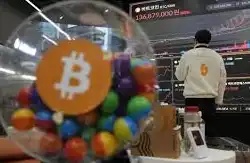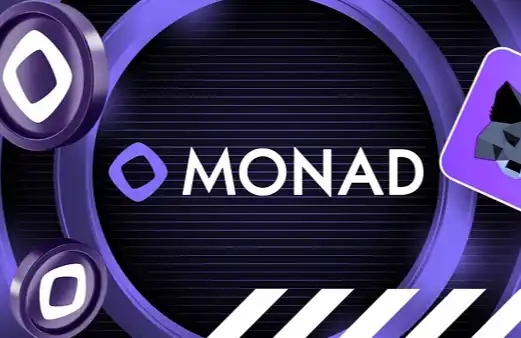ADL, Last Line of Defense
This recent major crash and liquidation event has sparked a public feud.
Hyperliquid founder Jeff Yan directly attacked on social media: "Some centralized exchanges openly stated that they significantly underreport user liquidation events. For example, on Binance, even with thousands of liquidation orders within the same second, they only report one. Since liquidation is a flash event, in some cases, the underreported amount can easily reach 100 times."

This statement undoubtedly dealt a heavy blow to CZ, and quickly CZ seemed to respond to Jeff: "When others try to ignore, hide, deflect responsibility, or attack competitors, key participants in the BSC ecosystem—Binance, Venus, etc.—have come out of pocket with hundreds of millions of dollars to protect users. Different value systems."

This debate quickly led to taking sides. DeFi veteran Andre Cronje sided with Binance, while Solana community core member and Helius Labs CEO Mert chose to support Hyperliquid. The entire industry has thus split into two camps.

But ultimately, the essence of this matter lies in the fundamental differences in stance between decentralized and centralized exchanges. And the most indicative of this difference is the ADL mechanism.
If it weren't for this recent major crash and liquidation event, most people might not have delved into the differences between Hyperliquid and Binance's ADL. And this difference precisely represents the two radically different philosophies of risk management between decentralized and centralized exchanges.
ADL: The Last Line of Defense
ADL, short for Auto-Deleveraging, is the cryptocurrency exchange's final risk safeguard. When the losses from liquidation exceed the insurance fund's capacity, the exchange activates this mechanism to maintain its solvency by forcibly closing profitable positions.
It may sound harsh, but it is a necessary evil. Because if not done, the exchange would go bankrupt, putting all user funds at risk.
Hyperliquid's ADL: Rare but Transparent
Let's take a look at Hyperliquid's ADL mechanism.
Hyperliquid's ADL system is designed like a multi-layer safety net that only triggers as a last resort when all other mechanisms fail. When a trader's position falls below the maintenance margin requirement — typically 2% to 5% of the position's notional value — the system first attempts to liquidate through a standard clearing process by matching liquidation orders on the order book. What if the order book depth is insufficient to complete the liquidation? The position and collateral will then be transferred to the Hyperliquid Liquidity Provider Pool, commonly known as the HLP Treasury.
Only when the value of the HLP Treasury or a specific isolated position account turns negative — meaning the unrealized losses have exceeded all available buffers — will the ADL be truly triggered. The specific triggering condition is: Insurance Fund Balance + Position Margin + Unrealized PnL ≤ 0. This mechanism does not have a fixed percentage threshold but dynamically adjusts based on the severity of the maintenance margin breach. For example, with 2x leverage, it may require over a 50% price drop to trigger ADL.
Hyperliquid intentionally designed ADL to be an extremely rare event. The event on October 11, 2025, was the first time the platform had triggered a full liquidation mode ADL in over two years of operation. It had previously only occurred occasionally in isolated margin mode.
Once ADL is triggered, the system queues according to the "Biggest Whale First" principle. The ranking formula is: Mark Price ÷ Entry Price × Nominal Position ÷ Account Value. It may sound a bit complex, but the logic is straightforward. The ratio of the mark price to the entry price measures how much you have gained percentage-wise; the higher the ratio, the more you've gained, and the higher the priority in liquidation. The ratio of nominal position to account value represents effective leverage; the larger your position relative to the account size, the more risk you introduce to the system and will be processed first.
The entire algorithm considers three factors: Unrealized PnL (most important), leverage ratio (secondary), and position size (third). This queue is a dynamic on-chain priority queue, with each asset or perpetual contract having its independent queue. The queue is updated in real-time based on mark prices and oracle data, refreshing approximately every 3 seconds. During execution, the system leverages the HyperBFT consensus mechanism's near-instant finality for batch processing. However, it's worth noting that due to the platform supporting cross-asset margin, there may be cases of imbalanced liquidation, such as only closing one side of hedging strategies.
Compared to centralized exchanges, Hyperliquid's ADL has several very unique aspects. First is the decentralized execution— all steps are automatically run through smart contracts on the Hyperliquid L1 blockchain, without relying on any off-chain engines or human intervention. This results in complete transparency, where all settlements and ADL events can be audited in real-time through a block explorer, with no room for any black-box operations.
The platform's deep integration with HLP is also interesting. The revenue generated from ADL flows back into the community treasury, as the platform uses 97% of the fees to buy back HLP and HYPE tokens. To incentivize order book liquidity, the platform does not charge any fees for settlements, and the HLP treasury does not selectively engage only in profitable trades, avoiding the issue of so-called "toxic liquidity."
Binance's ADL: Conventional but Not Transparent
Now let's take a look at how Binance does it.
Binance's ADL is the final safety valve on its USDT-margined futures platform, activated only after the insurance fund has been depleted. The triggering of this mechanism has several prerequisites: first, a trader's position must reach a liquidation state, meaning the losses exceed the maintenance margin and the account has a negative balance; second, the liquidation order must be executed at a very unfavorable price, resulting in a loss exceeding the margin; and finally, the futures insurance fund does not have enough funds to fully cover this gap.
Binance has not disclosed any specific trigger threshold percentage, as the entire mechanism is dynamic and depends on the specific contract and the market conditions at the time. Essentially, it indicates that the insurance fund relative to the bankruptcy amount has bottomed out. The platform has separate insurance funds for each perpetual contract, funded by trading fees and surpluses generated during the liquidation process.
Binance uses ADL scores to determine who gets liquidated first. For profitable positions, the ADL score = Profit/Loss Percentage × Effective Leverage. The Profit/Loss Percentage is the unrealized profit/loss ÷ initial margin × 100. The Effective Leverage is the position's notional value ÷ wallet balance. For losing positions, the ranking is based on Profit/Loss Percentage ÷ Effective Leverage, giving these traders lower priority. Finally, a user's ADL score ÷ the total number of eligible users gives the final ranking.
For example, if you have a 50% profit with 20x leverage, your ADL score would be 1000 points. This score is much higher than another trader who has a 20% profit with 10x leverage, giving them only 200 points, so you would be prioritized for liquidation.
Binance provides a five-level LED indicator system on the trading interface, right below the position details, allowing you to easily see your ADL risk level. A green light from zero to one indicates low risk, placing you in the bottom 80% of the queue, which is generally safe. Two lights signal medium risk, ranking you between 60% and 80%, requiring increased attention. Three yellow lights represent high risk, with a ranking between 40% and 60%, suggesting close monitoring.

Four orange lights indicate high risk, ranking between 20% and 40%, prompting you to consider reducing leverage. When all five lights turn red, it signifies the highest risk level, placing you in the top 20%, and in extreme market conditions, you may be liquidated first.
After ADL is triggered, the system first monitors the post-liquidation bankruptcy situation. If the insurance fund is insufficient, the queue is activated. It then arranges all losing positions in reverse ADL score order. Subsequently, it forcibly closes the highest-ranked position at the bankruptcy price or a better mark price until the liquidation amount is sufficient to cover the deficit. This process repeats until the deficit is covered or all positions in the queue are exhausted. In the most extreme scenario, if the queue is depleted and the deficit cannot be covered, there will be a so-called socialized loss.
After the liquidation, the affected users' gains and losses are realized, and the insurance fund may receive some surplus. The entire process is executed by a centralized engine, which is fast but not conducted on a public order book. Each contract has an independent queue that is dynamically updated. The system automatically excludes hedge positions or positions with too low leverage, and users cannot opt-out.
Binance's notification system is quite comprehensive. When ADL occurs, you will immediately receive App push notifications, emails, and SMS, detailing how many positions were liquidated, how it affected your gains and losses, and why the liquidation occurred. Before ADL is triggered, the five-level LED indicator will alert you, and you can also enable push notifications for high-risk ranking in the settings.
All ADL events are recorded in the trading history afterward, marked as a special execution type, and the system automatically generates support tickets for you to raise objections. These notifications are mandatory and cannot be disabled.
Key Mechanism Differences Comparison
In terms of execution, Hyperliquid uses on-chain smart contracts for full decentralization; Binance relies on a centralized risk management engine and internal servers. However, the most significant difference lies in transparency. Every step of Hyperliquid is verifiable on-chain, allowing anyone to audit the entire process. Although Binance has disclosed the ranking formula, the specific execution process is entirely opaque to outsiders, making it a semi-transparent black box.
For example, during the major market crash on October 11th, Hyperliquid, despite triggering ADL, Founder Jeff Yan emphasized that the platform maintained 100% normal operations with zero bad debts, and openly shared all liquidation data. The community saw this as a benchmark of transparency. Some users commented that although Hyperliquid's ADL mechanism may be "indiscriminate," it is at least honest, unlike centralized exchanges that may engage in concealment.
In contrast, the "black box" operations of centralized exchanges have raised widespread concerns. During the October 11th crash, some users questioned whether Binance had a "non-ADL protocol" with certain large clients, leading to ordinary users bearing a higher ADL risk. This was seen as the platform losing its neutrality. Some traders even believed that the order books of centralized exchanges could be manipulated, with the platform using its knowledge of liquidation prices to "slip" users, and then providing inaccurate liquidation data through means such as restricting APIs.
In terms of ranking algorithms, Hyperliquid uses the formula Mark Price ÷ Entry Price × Nominal Position ÷ Account Value. Binance uses Profit Percentage × Effective Leverage for profit-makers and Profit Percentage ÷ Effective Leverage for loss-makers.
The insurance fund structures also differ. Hyperliquid relies on the HLP Community Pool, which amounts to approximately $3.5 billion, alongside an independent sub-fund system. Binance has a separate insurance fund for each contract, funded by fees, with large contracts like BTC USDT having insurance funds in the millions of dollars.
In terms of trigger thresholds, Hyperliquid triggers when the account value is ≤0, which occurs after both standard liquidation and failed HLP takeover attempts. Binance triggers when the insurance fund cannot cover bankruptcy losses, with no fixed percentage.
Regarding fees, Hyperliquid does not charge fees for liquidations, aiming to encourage liquidity. Binance charges a 0.015% maker fee and a 0.04% taker fee to replenish the insurance fund. In terms of risk warnings, Hyperliquid's interface displays an ADL risk score, updated in real-time based on on-chain data. Binance provides a five-level warning system updated according to real-time mark prices.
The possibility of manual intervention also varies. Hyperliquid has minimal manual intervention, except in cases where validators call for emergency governance voting, such as during the JELLY token incident. While Binance has not publicly acknowledged it, there have been accusations that the platform provides special treatment under non-ADL protocols to VIP clients.
Data verifiability is the key distinction. Hyperliquid is fully auditable, with anyone able to verify through a block explorer and on-chain data. Binance's data can only be disclosed by the platform itself, with no external independent verification possible. In terms of transaction speed, Hyperliquid achieves sub-second latency based on the HyperBFT consensus, with a theoretical capacity of one hundred thousand transactions per second. Binance's centralized engine is usually almost instantaneous, but may experience delays under high load.
In terms of anti-liquidation design, Hyperliquid has designed its Auto-Deleveraging (ADL) to be extremely rare, with the first full account ADL occurring over two years into platform operation, and minimizing ADL through position size limits linked to depth. Binance's ADL is a more conventional risk tool, historically resulting in less than 0.1% of liquidations leading to ADL.
Ultimately, these are two completely different philosophies. Hyperliquid has opted for structural transparency—enforcing transparency through technical architecture, making it impossible for anyone to deceive. Binance has chosen efficiency as a priority—trading decentralization for speed, but with the trade-off of having to trust that the platform will not act maliciously.
In day-to-day operations, this difference may not be very apparent. But during extreme market conditions like those on October 11th, the difference is infinitely magnified.
Welcome to join the official BlockBeats community:
Telegram Subscription Group: https://t.me/theblockbeats
Telegram Discussion Group: https://t.me/BlockBeats_App
Official Twitter Account: https://twitter.com/BlockBeatsAsia


 Forum
Forum Finance
Finance
 Specials
Specials
 On-chain Eco
On-chain Eco
 Entry
Entry
 Podcasts
Podcasts
 Activities
Activities
 OPRR
OPRR









